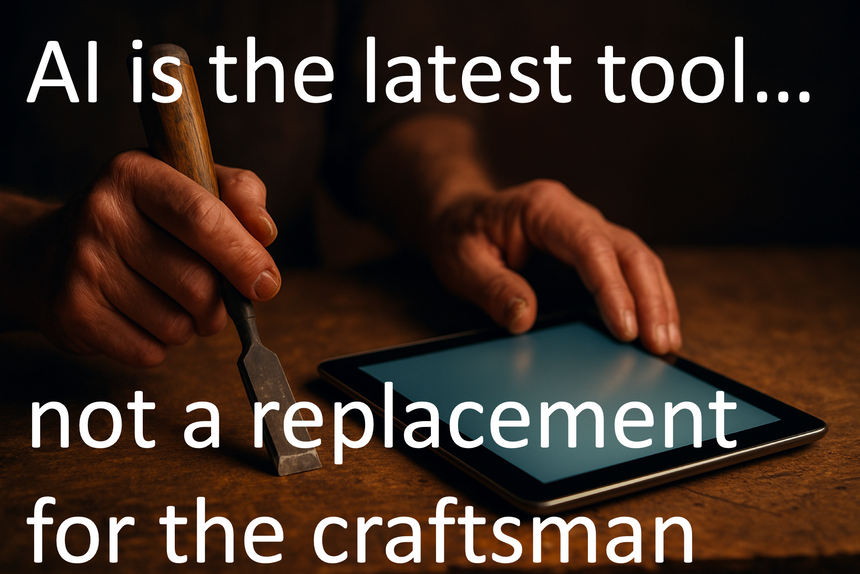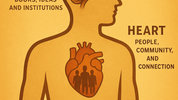What if the real story of AI isn’t about machines replacing us, but about tools that make us more human?
We’ve covered a lot of ground in this series, from lifelong learning to imagination to values to the urgent questions we must ask as AI accelerates.
So let’s close by looking at something simpler: how are people actually using AI right now?
Because if we cut through the headlines and hype, the answer is more ordinary, and more hopeful, than most realise.
The Myths vs the Reality
The media often frames AI in two extremes: either the robot overlord stealing jobs or the digital friend replacing human companionship. Both make for good headlines. Neither reflects reality.
Of course, there are valid concerns about AI being misused for malicious or unethical purposes. Those risks are real and must be taken seriously. Yet the data shows that the vast majority of people are using AI for ordinary, often hopeful purposes, supporting rather than replacing human effort.
Recent research gives us the clearer picture:
- Most people use AI for everyday assistance. According to MIT and OpenAI’s own usage analysis, the vast majority of use is for guidance, writing, and information. Emails, summaries, coaching prompts, brainstorming, explanations. Think personal assistant for the 21st century.
- Coding is a minority use. Just 4% of ChatGPT use is coding-related, despite the hype.
- Companionship is tiny. Only 1–2% of interactions. The dystopian “AI friend” narrative is more speculation than practice.
- Businesses are struggling. A 2025 NBER report found that 95% of enterprise AI projects deliver zero measurable Return on investment (ROI). The real success is at the level of individuals and small teams using flexible, intuitive tools.
In short: AI isn’t primarily replacing humans. It’s mostly supporting them.
The Rise of the Digital Personal Assistant
If the 20th century had secretaries, planners, and filing clerks, the 21st century has AI. Tools like ChatGPT are becoming personal assistants for thinking, writing, and organising.
They don’t take away your agency. They amplify it. They clear clutter, handle the tedious, surface insights, and leave more room for the human strengths we’ve explored in this series: creativity, empathy, presence, imagination, and relationship.
The danger is not that people rely on AI too much. The danger is forgetting what only humans can bring.
The Human Role: Asking the Better Question
Here’s the critical piece: AI is trained on what has been. It can accelerate answers, but it cannot ask, “Is this the right question?” … This remains our responsibility.
Wise humans are not satisfied with easy answers. We push for the deeper level:
- What truly matters here?
- What future are we building?
- What values will guide us?
- If you woke up tomorrow with no memory of how you’ve approached your work or life until now, how would you leverage today’s AI tools and technologies to solve your challenges in a way that truly aligns with your deepest values and sense of purpose?
This is the skill that AI can amplify, but never replace. And it’s the thread running through all nine posts: in the age of machines, our human advantage lies in discernment, values, and purpose.
What This Means for Coaches, Therapists, and Human Development Professionals
For those in coaching, therapy, or personal development, this is more than a philosophical point — it’s practical.
AI can help generate questions, track progress, or provide resources. But the human professional brings something AI cannot:
- Empathy — attunement to the client’s lived experience.
- Discernment — knowing when to stay silent, when to challenge, when to encourage.
- Relationship — the trust, presence, and resonance that create the conditions for transformation.
- Purpose-work — helping clients discover the values that give their lives direction and meaning.
In other words, AI can serve as the assistant. But it is you who holds the compass.
A Good Craftsman Never Blames His Tools
There’s an old saying: a good craftsman never blames his tools.
AI is a tool. A powerful one, yes. But it is not the author of meaning, or the arbiter of values, or the keeper of purpose.
That’s us.
The craftsman chooses what to build. The tool assists. The relationship works only when the human hand and heart stay firmly on the handle.
Closing Thought
Machines will keep learning faster. That much is inevitable.
But the future does not belong to processors. It belongs to the people who know how to use them well, as assistants, amplifiers, and tools, while staying anchored in the very values that make us human.
Creativity. Empathy. Imagination. Discernment. Relationship. Purpose.
These are not optional extras. They are the blueprint for the kind of humanity we want to build.
Because in the age of AI, the real question is not what the tool can do, but what we will choose to craft with it.
References:
 unknownx500
unknownx500





